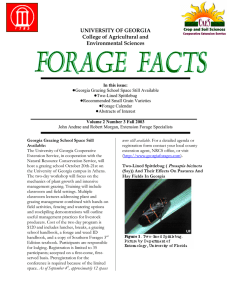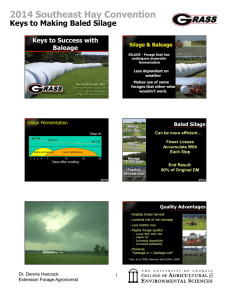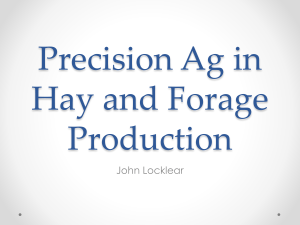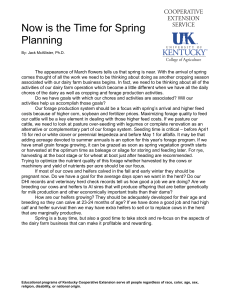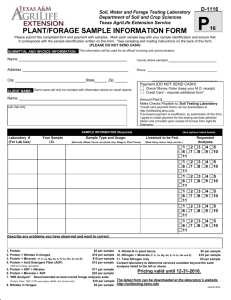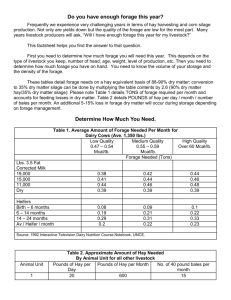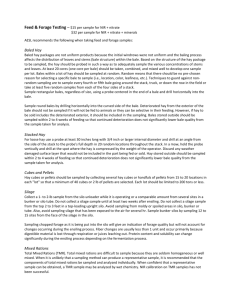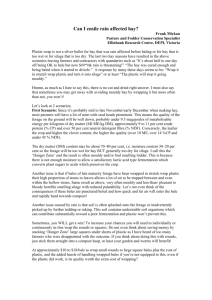Baleage Pros and Cons John Andrae Crop and Soil Sciences Department
advertisement
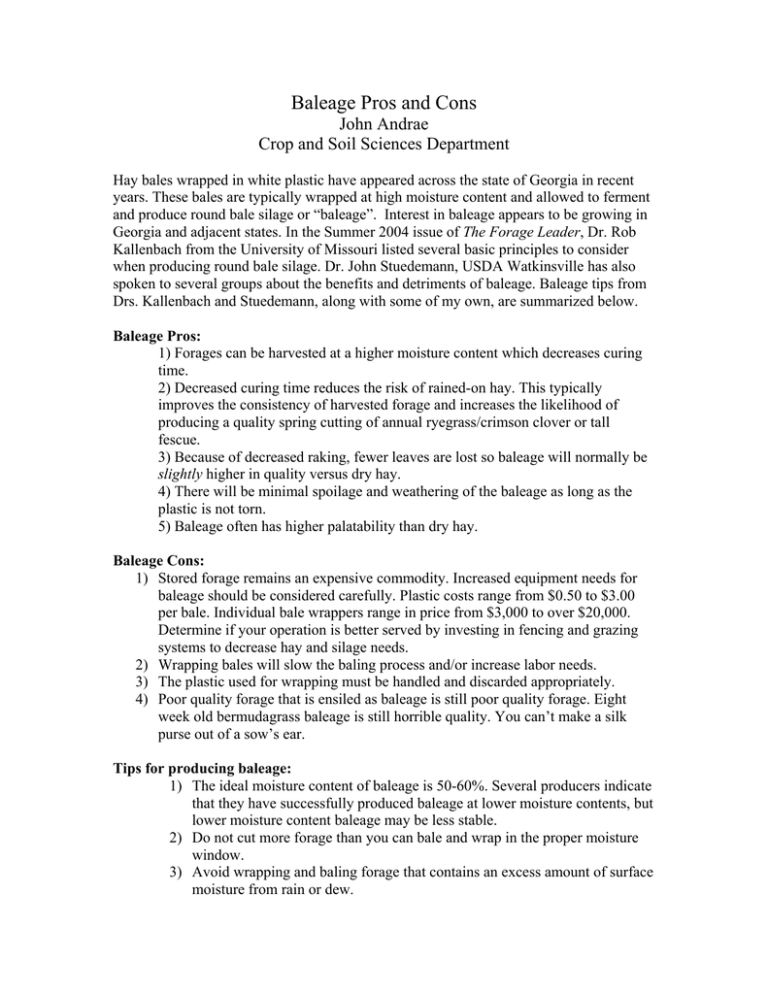
Baleage Pros and Cons John Andrae Crop and Soil Sciences Department Hay bales wrapped in white plastic have appeared across the state of Georgia in recent years. These bales are typically wrapped at high moisture content and allowed to ferment and produce round bale silage or “baleage”. Interest in baleage appears to be growing in Georgia and adjacent states. In the Summer 2004 issue of The Forage Leader, Dr. Rob Kallenbach from the University of Missouri listed several basic principles to consider when producing round bale silage. Dr. John Stuedemann, USDA Watkinsville has also spoken to several groups about the benefits and detriments of baleage. Baleage tips from Drs. Kallenbach and Stuedemann, along with some of my own, are summarized below. Baleage Pros: 1) Forages can be harvested at a higher moisture content which decreases curing time. 2) Decreased curing time reduces the risk of rained-on hay. This typically improves the consistency of harvested forage and increases the likelihood of producing a quality spring cutting of annual ryegrass/crimson clover or tall fescue. 3) Because of decreased raking, fewer leaves are lost so baleage will normally be slightly higher in quality versus dry hay. 4) There will be minimal spoilage and weathering of the baleage as long as the plastic is not torn. 5) Baleage often has higher palatability than dry hay. Baleage Cons: 1) Stored forage remains an expensive commodity. Increased equipment needs for baleage should be considered carefully. Plastic costs range from $0.50 to $3.00 per bale. Individual bale wrappers range in price from $3,000 to over $20,000. Determine if your operation is better served by investing in fencing and grazing systems to decrease hay and silage needs. 2) Wrapping bales will slow the baling process and/or increase labor needs. 3) The plastic used for wrapping must be handled and discarded appropriately. 4) Poor quality forage that is ensiled as baleage is still poor quality forage. Eight week old bermudagrass baleage is still horrible quality. You can’t make a silk purse out of a sow’s ear. Tips for producing baleage: 1) The ideal moisture content of baleage is 50-60%. Several producers indicate that they have successfully produced baleage at lower moisture contents, but lower moisture content baleage may be less stable. 2) Do not cut more forage than you can bale and wrap in the proper moisture window. 3) Avoid wrapping and baling forage that contains an excess amount of surface moisture from rain or dew. 4) Tight bales are needed to decrease oxygen content and improve ensiling. 5) Decrease bale size since baleage weighs more than dry hay due to moisture content. 6) Do not use treated sisal twine as it is incompatible with plastic wrap. 7) If possible wrap within 2-4 hours of baling. 8) Wrap individual bales with at least four layers of 1 mil thick plastic with a 50% overlap. Summary While baleage is growing in popularity across Georgia, don’t jump on the bandwagon just because your neighbor is doing it. Every operation is different. In order to successfully contribute to your operation, baleage must (1) decrease field losses, (2) decrease storage losses or (3) improve animal performance.
